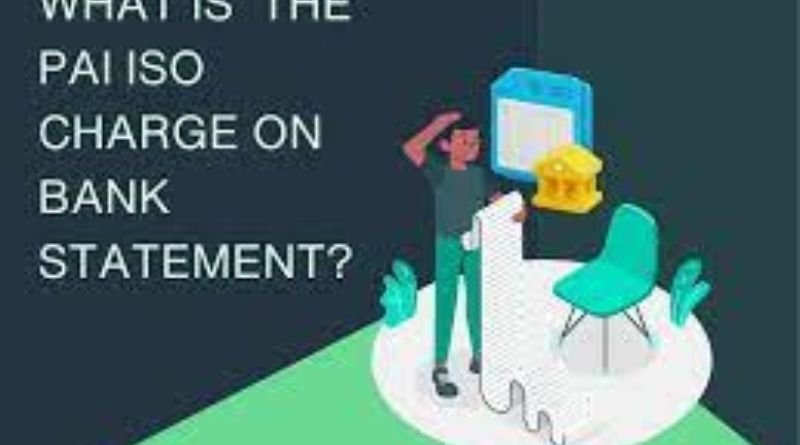Understanding your bank statement can sometimes be a perplexing task, especially when unfamiliar charges appear. One such charge that might catch your eye is the “PAI ISO” charge. This article aims to demystify this charge, explain what it means, why it appears on your bank statement, and what actions you might need to take if you see it. By the end of this article, you should have a clear understanding of the PAI ISO charge and its implications.
What Does PAI ISO Stand For
PAI ISO stands for Payment Alliance International Independent Sales Organization. Payment Alliance International (PAI) is a prominent company in the financial services sector that provides a variety of payment processing solutions. An Independent Sales Organization (ISO) is an entity that sells and manages merchant accounts for payment processors. Essentially, PAI ISO refers to transactions processed through PAI’s network, facilitated by an ISO.
Why Is PAI ISO Charge on Your Bank Statement?
The PAI ISO charge on your bank statement typically indicates a transaction processed through a terminal or a merchant service managed by Payment Alliance International. There are several scenarios where you might see this charge:
- ATM Withdrawals: If you withdrew cash from an ATM managed by PAI, a fee for using this service might appear as a PAI ISO charge.
- Retail Purchases: Purchases made at retail locations that use PAI’s payment processing services can result in a PAI ISO charge.
- Merchant Services Fees: If you are a business owner, fees associated with your merchant account or payment processing services might be listed under PAI ISO.
- Subscription Services: Some subscription services that use PAI for payment processing could also reflect charges in this manner.
How to Verify the PAI ISO Charge?
When you notice a PAI ISO charge on your bank statement, it’s crucial to verify its legitimacy. Here are steps you can take:
- Review Recent Transactions: Check your recent purchases and ATM withdrawals to see if any align with the amount charged.
- Contact the Merchant: If you recognize the charge but aren’t sure of its source, contacting the merchant directly can provide clarity.
- Consult Your Bank: If the charge remains unclear, your bank can offer detailed information about the transaction, including the merchant’s name and location.
Preventing Unauthorized Charges
Unauthorized charges can be concerning. Here are some tips to help prevent them:
- Monitor Your Accounts Regularly: Regularly checking your bank statements and account activity can help you spot and address unauthorized charges quickly.
- Secure Your Payment Information: Ensure your payment information is stored securely and only shared with trusted merchants.
- Use Alerts: Many banks offer alert services that notify you of transactions over a certain amount. Setting up these alerts can help you stay on top of your account activity.
What to Do If the Charge Is Unauthorized
If you determine that the PAI ISO charge is unauthorized, here are steps you should take immediately:
- Report to Your Bank: Contact your bank to report the unauthorized charge. They can initiate an investigation and potentially reverse the charge.
- Freeze or Replace Your Card: To prevent further unauthorized charges, you might need to freeze or replace your debit or credit card.
- File a Fraud Report: If you suspect fraud, filing a report with your local law enforcement and the Federal Trade Commission (FTC) can help protect you and others.
The Role of PAI in Payment Processing
Payment Alliance International plays a significant role in the payment processing ecosystem. Understanding their role can provide context for the PAI ISO charge:
- ATM Services: PAI manages a network of ATMs across various locations, offering convenient cash withdrawal services. Fees associated with these withdrawals are common and typically displayed as PAI ISO charges.
- Merchant Services: PAI provides payment processing solutions for a wide range of businesses, from retail stores to online merchants. These services include handling credit and debit card transactions, which can result in PAI ISO charges on statements.
- Independent Sales Organizations: As an ISO, PAI works with independent agents and smaller companies to extend its reach in the market, facilitating payment processing for even more businesses and ATMs.
Benefits of Using PAI Services
For businesses and consumers alike, there are several benefits to using PAI’s services:
- Convenience: With a widespread network of ATMs and merchant services, PAI offers convenience for both cash withdrawals and retail transactions.
- Security: PAI utilizes advanced security measures to protect transactions, reducing the risk of fraud.
- Support for Businesses: Businesses using PAI’s services benefit from efficient payment processing, which can enhance customer satisfaction and streamline operations.
Common Questions About PAI ISO Charges
To further clarify the nature of PAI ISO charges, here are answers to some common questions:
Q: Why did I receive multiple PAI ISO charges in one month? A: Multiple charges can occur if you’ve made several transactions through PAI-managed ATMs or merchants within the month.
Q: Can I dispute a PAI ISO charge if I don’t recognize it? A: Yes, you can dispute any charge with your bank if you don’t recognize it. Your bank will investigate the charge and take appropriate action.
Q: Are PAI ISO charges typically high? A: The amount of PAI ISO charges can vary. ATM fees are usually a few dollars, while merchant service fees depend on the transaction amount and the specific terms of service.
Conclusion
Understanding the PAI ISO charge on your bank statement is crucial for managing your finances effectively. Whether it’s related to an ATM withdrawal, a retail purchase, or a merchant service fee, knowing the source and legitimacy of the charge can help you avoid confusion and potential fraud. Regularly monitoring your account, verifying unfamiliar charges, and taking prompt action if needed are essential steps in maintaining financial security.
Read also: check



